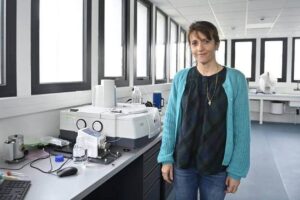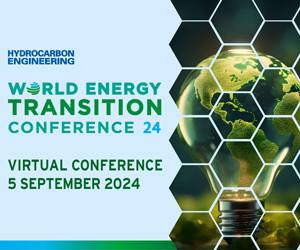Cookies play an essential role in the operation of online services.They allow for maintaining and delivering personalized experiences.By using this data, we ensure protection against threats such as spam and fraud.
Through the collection of data, we can track interruptions and improve the quality of our services. When you choose to accept all, we develop new features and measure the effectiveness of advertising. This approach allows us to offer personalized content tailored to your preferences. For those who prefer to refuse all, we remain committed to providing non-personalized content based on your current activity and location.
Table of Contents
ToggleCarnegie Clean Energy commits in Spain with its CETO wave technology
Carnegie Clean Energy, an innovative company in the field of marine energy, has just secured a contract worth €600,000 for the deployment of its CETO wave technology in Spain. This significant advancement marks an important step in the transition to renewable and sustainable energy sources. This contract represents not only recognition of the technological performance of Carnegie Clean Energy but also a strong commitment to reducing carbon emissions and combating climate change.
What is CETO wave technology and how does it work?
The CETO wave technology developed by Carnegie Clean Energy is an innovative solution that harnesses the energy of waves to produce electricity. This system consists of underwater buoys that capture the movement of waves at the surface of the ocean. Each buoy is connected to a hydraulic pumping system that converts the mechanical energy from the waves into electrical energy. This electricity can then be injected into the national grid or used to power local infrastructure.
The deployment of CETO technology in Spain is part of a broader initiative aimed at diversifying the energy mix and reducing dependence on fossil fuels. Indeed, Spain has tremendous potential for marine energy, particularly due to its long coastlines and the specific characteristics of its waves. The adoption of CETO technology would effectively exploit this renewable resource while minimizing environmental impact.
Moreover, this technology is designed to be sustainable and respect marine ecosystems. Unlike other marine energy systems, CETO buoys are fully submerged, reducing interference with local wildlife and flora. This innovative approach is essential for ensuring the sustainability of marine resources and preserving biodiversity, a crucial issue for future generations.
Why is this contract important for marine energy in Spain?
The contract signed by Carnegie Clean Energy for the deployment of CETO technology in Spain represents a major advancement for the marine energy sector in the country. Indeed, this initiative is aligned with the ambitious goals set by the European Union regarding energy transition and greenhouse gas emission reduction.
According to the report on renewable energies, marine energies play a key role in diversifying energy sources and securing energy supply. By harnessing marine resources, Spain can not only reduce its dependence on fossil fuels but also create new economic opportunities and jobs in the green technology sector.
Furthermore, this contract demonstrates the trust placed in Carnegie Clean Energy by Spanish energy stakeholders and government authorities. It paves the way for future collaborations and investments in the marine energy sector, thereby strengthening Spain’s position as a leader in clean and sustainable technologies.
What are the economic and environmental benefits of this project?
The implementation of CETO technology in Spain will bring significant benefits both economically and environmentally. Economically, this project is expected to generate many local jobs, particularly in the manufacturing, installation, and maintenance of equipment. Additionally, the investment of €600,000 directly contributes to the local economy and boosts the renewable energy sector.
In environmental terms, CETO technology allows for electricity production without carbon emissions, thereby contributing to the fight against climate change. Unlike fossil energies, wave energy is inexhaustible and does not produce atmospheric pollutants. This characteristic is essential for achieving sustainability goals and preserving the marine environment.
Moreover, integrating CETO technology into the Spanish landscape fosters the transition to a greener and more resilient economy. This aligns with calls from various environmental organizations to end subsidies to fossil fuels, highlighting the importance of supporting renewable initiatives for a sustainable future.
Finally, this project contributes to securing energy resources in the long term by harnessing a renewable and abundant energy source. This reduces vulnerability to fluctuations in fossil fuel prices and ensures energy stability for the years to come.
What are the challenges and future prospects for Carnegie Clean Energy in Spain?
Despite the numerous advantages, the deployment of CETO technology in Spain is not without challenges. One of the main obstacles is the need to overcome technical constraints related to the installation and operation of buoys at sea. Variable marine conditions and storm-related risks require robust and resilient solutions to ensure the continuity of energy production.
In addition, it is crucial to raise public and decision-makers’ awareness of the benefits of wave energy. The success of this project will largely depend on social acceptance and political support for renewable initiatives. Awareness and information campaigns, similar to those used by other sustainable projects, will be essential to strengthen adherence and promote energy transition.
Despite these challenges, the future prospects for Carnegie Clean Energy in Spain are promising. The company plans to expand its operations by increasing the number of installed CETO buoys and exploring new partnerships with other energy sector players. This expansion will not only increase energy production capacity but also reinforce Carnegie Clean Energy’s position as a leader in innovative marine technologies.
In the long term, the success of this project could serve as a model for other countries with similar marine resources. By demonstrating the viability and effectiveness of CETO technology, Carnegie Clean Energy could pave the way for broader adoption of wave energy, thus contributing to a global and sustainable energy transition.
How does this project fit into Spain’s overall renewable energy strategy?
The contract signed by Carnegie Clean Energy perfectly aligns with Spain’s national strategy to increase the share of renewable energies in its energy mix. The Spanish government has set ambitious goals to reduce greenhouse gas emissions and tackle climate change, in line with the commitments of the European Union.
By investing in CETO wave technology, Spain strengthens its position as a pioneer in marine energies. This initiative is in harmony with other similar projects, such as the exploitation of wave energy to produce clean drinking water, demonstrating the country’s commitment to innovative and sustainable solutions.
Furthermore, this project promotes collaboration between the private sector and public institutions, creating an ecosystem conducive to innovation and technological development. By supporting initiatives like that of Carnegie Clean Energy, Spain encourages the emergence of new technologies and the development of local skills in the renewable energy sector.
Finally, integrating CETO technology contributes to achieving Spain’s energy security objectives. By diversifying its energy sources and harnessing marine resources, the country reduces its dependence on fossil fuel imports, thereby strengthening its energy autonomy and resilience to fluctuations in the global energy market.









